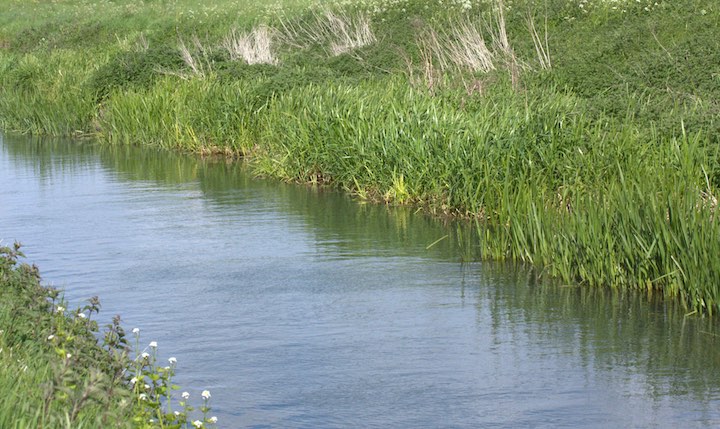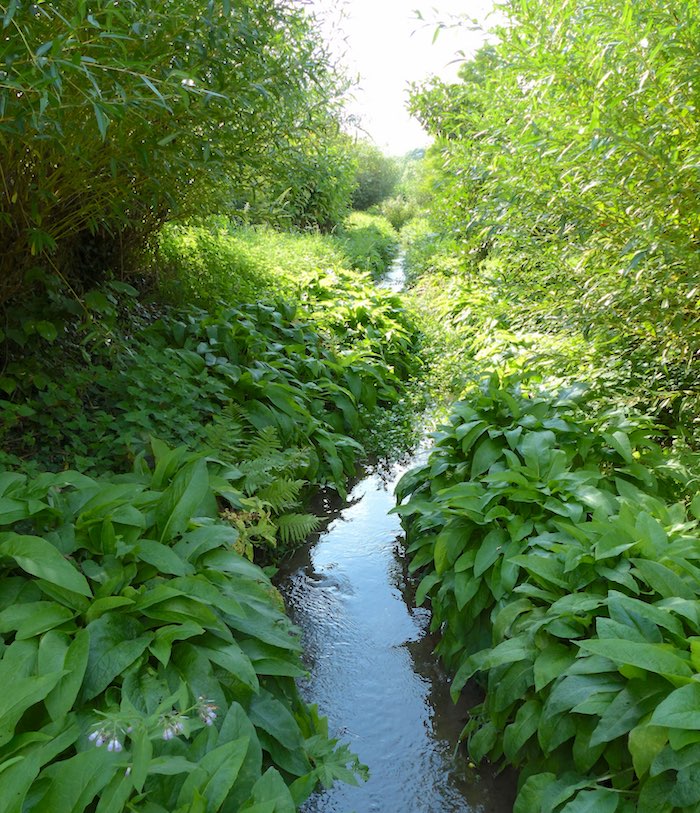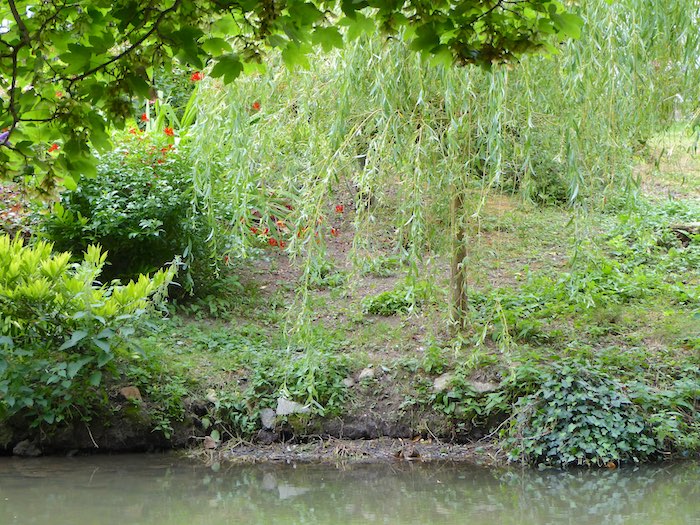Habitat

It is easy to provide a home for water voles, so that populations can thrive or expand and move into your waterway, pond or lake. They prefer soft, undisturbed earth banks which they can burrow into with wide margins which have tall grasses, stands of rosebay willowherb, purple loosestrife, meadowsweet, or nettles, often fringed with emergent rushes, sedges or reeds, to give them food and cover. They will gnaw on the roots and bark of sallow and willow, as well as the rhizomes, bulbs and roots of herbaceous plants during winter. Water voles also inhabit extensive reed-beds where they weave rugby ball-sized nests made of reeds. They will avoid sites that are heavily grazed, trampled or over-shaded by dense scrub or trees, but will happily live underneath the light shade of brambles and like to eat the leaves and the berries. Thorny brambles also give them protection from their many predators which they can hide beneath, although these need some management over winter to make sure they do not completely block passage through the stream for any kingfisher fishing there. It is worth bearing in mind that some solitary bees overwinter in the hollow stems of bramble, so when any management is undertaken it is best to leave the cuttings in a pile in an area which will not flood (if possible).

A water vole will even inhabit a ditch with slow flowing water, whether it is on a farm, land that you own, a school, college, industrial or housing estate. You just need to make sure that there is plenty of vegetation growing from the banks and emerging from the water to provide food and cover from their many predators and make sure that it is not polluted. They will need at least two metres (ideally five metres) of uncut bank-side vegetation until the end of the breeding season. This is vital, as a water vole needs to consume the equivalent of 80% of its body weight in food each day and a breeding female double that amount. This cannot be stressed often enough. If a water vole has a plentiful supply of food, its population will increase rapidly. Due to numbers having fallen from 8 million to 100,000 across the UK, a good food source is vital. Far too many banks across the UK are strimmed to ground-level and over zealously tidied from spring through to autumn, leaving water voles no choice but to move on. Nowadays water voles are failing to thrive due to a desperate shortage of ideal habitat.

Management
The beauty of managing habitat for water voles is that they help to manage it themselves whilst also increasing biodiversity. See What good is a water vole and why do they matter? You do not have to introduce any plants, as they have been recorded eating 227 species. Also their banks and emergent vegetation need minimal management. They depend on our not cutting their banks to ground-level between March and the end of September at earliest, or removing native plants through gardening the banks and leaving bare earth, which removes their food and cover thereby making them easy prey for their many predators. It is best to manage habitat by cutting alternate sides of the bank, or only one side of the bank. Your neighbourly help will enable them to survive, as they have now declined by 95% across the UK, partly due to habitat loss, habitat fragmentation and predation by the non-native American mink. A female mink is small enough to enter their burrows.
You will be rewarded by moments of joy and delight as you watch the behaviour
of these charismatic water-dwellers, immortalised in Kenneth Grahame’s, Wind in the Willows, as the much loved character ‘Ratty’.
There’s more information about their fascinating life and behaviour in The Water Vole’s Year.
Full Legal Protection In England & Wales
Water voles were given full legal protection in England & Wales on the 6th April 2008 by provisions under section 9 of Schedule 5 of the Wildlife & Countryside Act 1981 (as amended). Schedule 5 of this Act makes it an offence to intentionally or recklessly damage, destroy or obstruct access to any structure or place that a water vole uses for shelter or protection. It is also an offence to disturb, kill or injure a water vole or handle a water vole without a licence. (Wildlife and Countryside Act 1981). Disturbing or harming a water vole, damaging its habitat or destroying or blocking water vole burrows could lead to prosecution. Offences carry a maximum penalty of £5,000.
